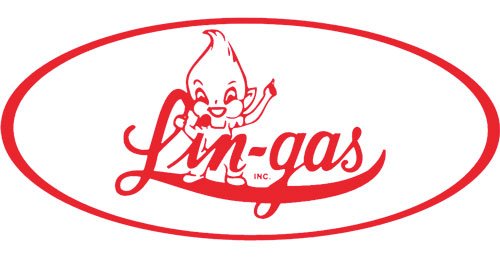People have a lot of questions about propane fuel. There are news stories every now and again about a tank of propane bursting, or something catching fire due to an ignition linked, at least partially, to nearby propane equipment. Consequently, people become understandably just a bit curious about propane safety.
Most people become curious about propane tanks in general. How can something so flammable be safely stored in a tank that some homeowners keep inside their homes, or very close to it? Well, keep in mind that those tanks are very well built. The reason they’re used is simple — propane can exist as a liquid or a vapor, but is literally hundreds of times more compact as a liquid than it is as a gas. Storing propane inside of those tanks you see is a choice made by the math of the situation. If you wanted to buy propane as a gas, you’d be getting about 270 times less energy for the same tank.
When propane is released from the tank, it comes out as a clean-burning fuel gas. Millions of homeowners, businesses, industrial and agricultural sites, and other locations rely on this gas for its versatility and efficacy. It’s widely used for heating or cooling air, cutting, heat treating, barbecuing, crop drying, cultivation, water heating, and refrigeration. Propane services virtually every need.
The gas itself isn’t a danger to you at all. In fact, if it weren’t for the engineers and manufacturers adding odorants to it, humans wouldn’t be able to detect it at all! It’s also non-toxic, so there’s very little to be afraid of when it comes to propane.
Of all the various available gas products, propane fuel is easily one of the safest and most cost-efficient fuels available today. There’s a lot of hard science and intelligent engineering responsible for those tanks and the gas inside of them. They’re very safe to use.
Previously we told you about a 50 cent per gallon tax credit. That credit expired December 31, 2014.
However, the PATH Act of 2015 (Protecting Americans from Tax Hikes) signed by President Obama makes retroactive to January 1, 2015 the 50 cent per gallon alternative fuel tax credit and alternative fuel mixture tax credit. It also extends the credit for 2016 but at a reduced rate. This credit is commonly applicable for taxpayers who use propane or liquefied petroleum gas to fuel vehicles not required to be registered for highway use, e.g. forklifts.
If you aren’t familiar with this 504 credit, below is a recap of how the credit works.
As you probably know, propane used in forklifts is exempt from the Federal Excise Tax.
The Internal Revenue Service (IRS) has made it clear that under the terms of P.L. 109-59, the Safe, Accountable, Flexible and Efficient Transportation Equity Act of 2005 (referred to as the Highway Bill) that forklifts fit the definition of an off-highway business motor vehicle and hence, propane used in a forklift is eligible for the 50 cent per gallon tax credit.
Be certain you understand this clearly:
PROPANE used in a forklift is eligible for the 50 cent per gallon tax credit
This is a huge benefit, assuming you took appropriate steps to properly register with the IRS. So read on and if the process sounds a bit cumbersome, it is worth it.
As a first step, forklift operators must file a Form 637 with the IRS in order to become registered as an “Alternative Fueler”. IRS will then issue a registration number identifying the forklift operator as an Alternative Fueler. After receiving a registration number, the forklift operator can file a claim for the credit at the end of the year by filing Form 4136.
Lin-gas, Inc. is not a tax advisor. We offer this information to you for further review and suggest that you obtain the advice of your tax counsel.
Relevant IRS forms may be viewed and downloaded by going to www.irs.gov/formspubs/index.html
As always, we appreciate your business and hope you will contact us if there is anything we might do to help you complete the process. Please review our website for additional information. We hope this information will offer a tax advantage to your Company and urge you to seek professional tax advice for this most important benefit.
If you have any questions, please call Judy at our Evansville office at 800-850-4380.
If you’re like most homeowners nowadays, you probably have a residential propane service, but you don’t know too much about it. In fact, you’ve probably been heating your home with propane for years without considering where it really comes from or how it impacts the overall energy industry.
So why exactly are propane services so important for homeowners today?
Propane fuel is one of the most common methods of home heating in the U.S. today; around 60 million Americans depend on this service, believe it or not. Over 8 million homes in the U.S. use propane, and almost 5% of these households consider propane to be their primary heating source.
Propane fuel is even more important for people living in mobile or manufactured homes. Out of the estimated 6.3 million mobile homes in the U.S. today, at least 16% of these homes depend on propane more than any other type of heating fuel.
Not only is propane important for residential buildings, it’s also essential for commercial buildings, too. Hotels and restaurants, for example, use propane fuel for a variety of different purposes. Everything from cooking to refrigeration, from washing clothes to providing heat and light — propane can be used for it all. It’s estimated that 1 million individual commercial establishments depend on propane.
Propane services are also very important for certain niche industries, such as farming. Approximately 660,000 farmers in the U.S. depend on propane for irrigation pumps, generators, and a variety of other farm equipment needed to produce crops, care for animals, and ensure that food is kept safe and clean. Most Americans don’t consider these needs simply because they aren’t familiar with all of the necessary equipment on a farm, but without this equipment, the entire food production industry would be affected.
Last but not least, it should be noted that propane services are crucial to the security of the energy industry. Around 90% of the propane consumed in the U.S. is actually produced domestically; the majority of the remaining 10% typically comes from Canada or Mexico. Compared to other forms of fuel, domestically-harvested propane is a very stable source of energy and it stimulates the U.S. economy by creating a need for local jobs.
So now it’s time to ask yourself, just how important is the propane fuel industry today? We bet your answer will be the same as ours!
Lingas Corporate HQ
406 S. Barker Avenue
Evansville, Indiana 47712
800.850.4380 TOLL FREE
812.424.9021 PHONE
812.424.9056 FAX




